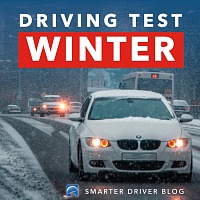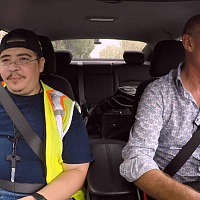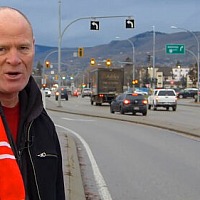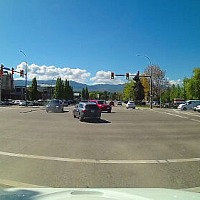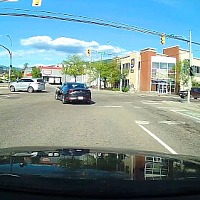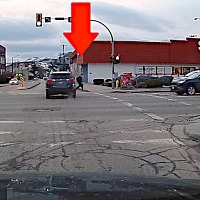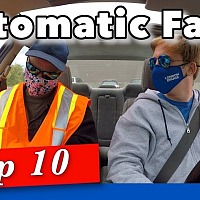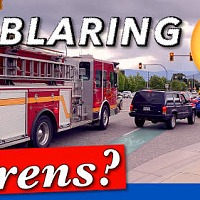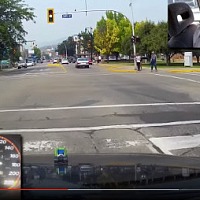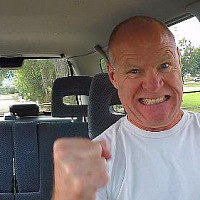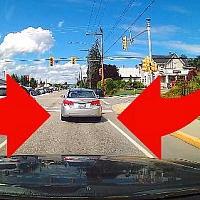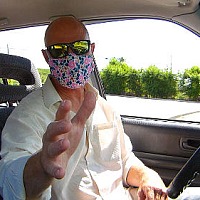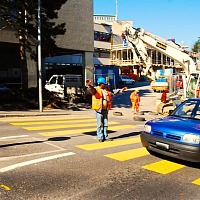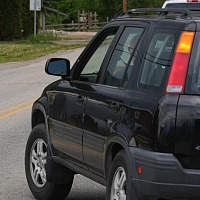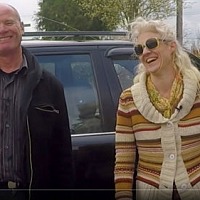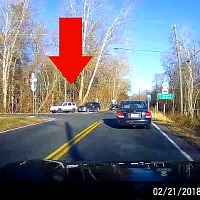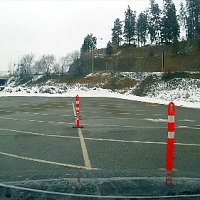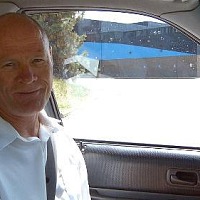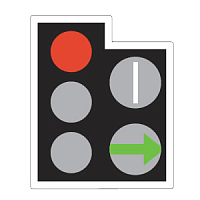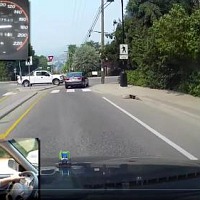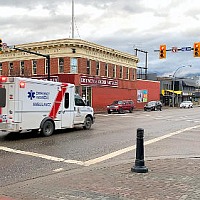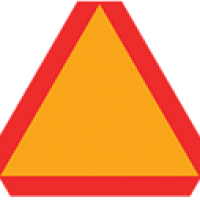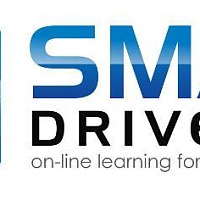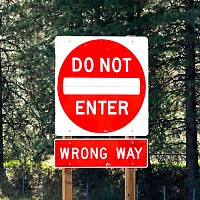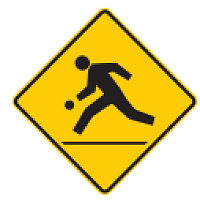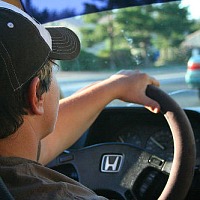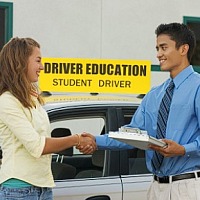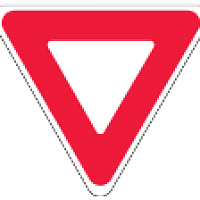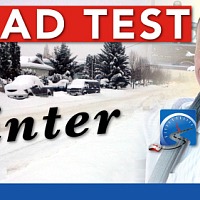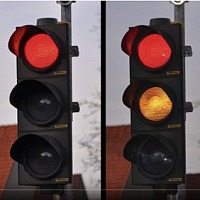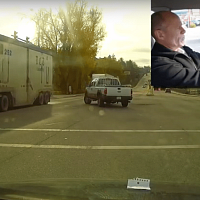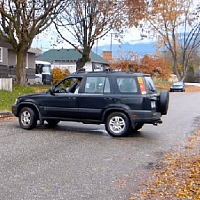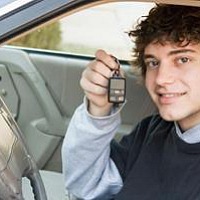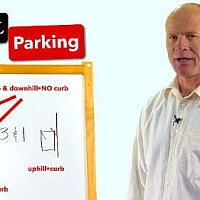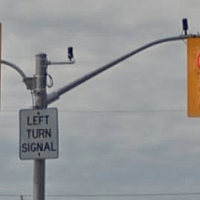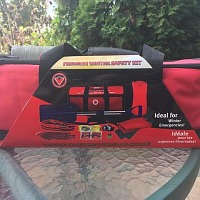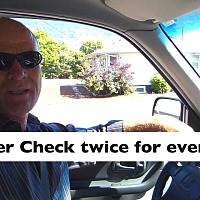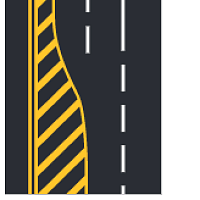Taking a road test; do you know how to park along a curb? Watch the video!
How to Curb Park | Pass a Road Test
Closed Caption
Introduction
Hi there smart drivers, Rick with Smart Drive Test talking to you today about curb parking. I had a comment from Sabertoothed and Treyday 15, both of those smart drivers were having some challenges with parking along a curb and getting within six to nine inches from the curb. Now the first thing I'm going to tell you is don't practice curb parking first! Go to a parking lot and practice slow-speed maneuvers. Go to your local rental shop and get some of the 36 inch, 1 meter tall pylons. And you only need four of them - they're less than about fifteen dollars to rent for the day. And then come out to the parking lot and do slow-speed maneuvers.
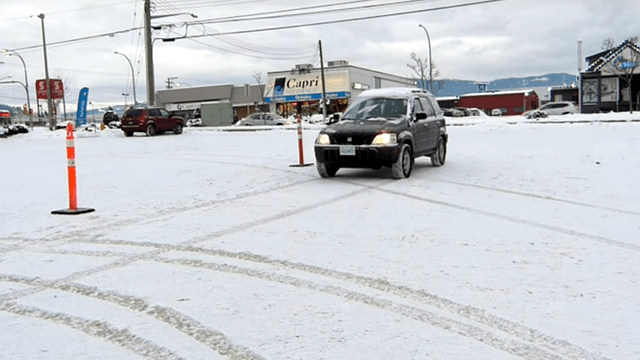 Now I can understand the difficulty that you're having because there's huge blind spots around the vehicle and when I get to the rest of the video here I'll talk to you about blind spots around your vehicle. And the larger the vehicle, the bigger the blind spot. So do slow-speed maneuvers - those will improve your overall driving. The other thing I'm going to say about the road test is that 7/8 of your road test is in a forward motion. 1/8 of the road test is slow-speed maneuvers, unfortunately it's that 1/8 of the road test is going to give you the most difficulty, and proves to be the most challenging.
Now I can understand the difficulty that you're having because there's huge blind spots around the vehicle and when I get to the rest of the video here I'll talk to you about blind spots around your vehicle. And the larger the vehicle, the bigger the blind spot. So do slow-speed maneuvers - those will improve your overall driving. The other thing I'm going to say about the road test is that 7/8 of your road test is in a forward motion. 1/8 of the road test is slow-speed maneuvers, unfortunately it's that 1/8 of the road test is going to give you the most difficulty, and proves to be the most challenging.
Yet slow-speed maneuvers, yes they're not sexy! It is no fun going to a parking lot and driving around slow, especially when your friends are watching. You don't want them to see you. You have to do it because it's going to improve your overall driving and help you park near a curb. I too had that challenge when I moved to Australia in early-2000. I had to take my license test again and I was sitting on the other side of the vehicle. I had no concept of how far the other side of the vehicle--the curb side of the vehicle--was away from me on my road test/training because in Australia the driving schools do the road test.
| Don't Fail Your Road Test!! | |
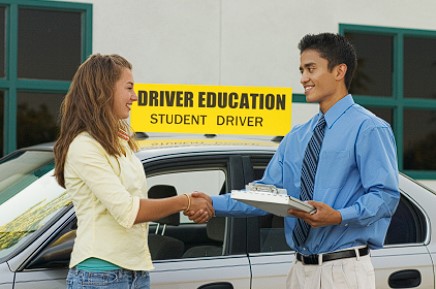
A course for new drivers working towards their first license. |
This self-paced course gives you:
|
And I did training as well as a road test. The examiner got me to park near the curb while I was sitting on the right side of the vehicle. I had no idea where that left side of that vehicle was, and I bet I was at least five feet away from the curb. So I understand your challenge and understand how difficult it is to get close to the curb when you're parking. But practice slow- speed maneuvers and those will translate into your overall driving and help you to park better. So what we're going to do today is I'm gonna go to the parking lot and i'm going to show you how to do slow- speed maneuvers that will improve your overall driving, especially curb parking. So stick around, we'll be right back with that information.
[MUSIC AND INTRODUCTION]
Blind Spots
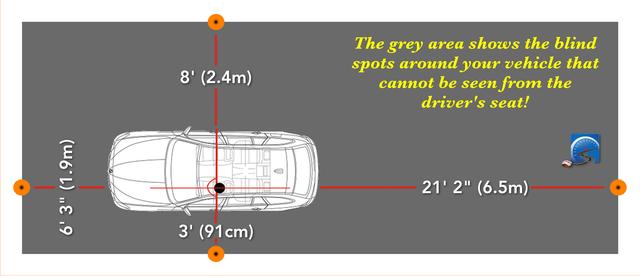 Hi there smart drivers welcome back. Rick with Smart Drive Test talking to you today about how to park along a curb. And the first thing you need to know about your vehicle, you need to know about the blind spots around your vehicle. The blind spots around your vehicle are fairly significant. And out the front of the vehicle your blind spot is more than six feet to be able to see an 18 inch pylon. If you move that pylon out to the back of the vehicle, it is even more significant. It's more than 20 feet before you can see that 18-inch pylon out the back of the vehicle. so there is a significant blind spot at the back.
Hi there smart drivers welcome back. Rick with Smart Drive Test talking to you today about how to park along a curb. And the first thing you need to know about your vehicle, you need to know about the blind spots around your vehicle. The blind spots around your vehicle are fairly significant. And out the front of the vehicle your blind spot is more than six feet to be able to see an 18 inch pylon. If you move that pylon out to the back of the vehicle, it is even more significant. It's more than 20 feet before you can see that 18-inch pylon out the back of the vehicle. so there is a significant blind spot at the back.
The second-biggest blind spot on your vehicle--not really surprising--is out on the passenger side. And it's almost eight feet from the passenger's door out to an 18-inch pylon that you're able to see it from the driver's side. If you measure the inside of the vehicle, and I have a small SUV (Sport Uitlity Vehicle) it's four feet, so it's 12 feet, more than three and a half meters out to that pylon. So there's a fairly significant blind-spot on the passenger side.
And the smallest blind spot on your vehicle is out on the driver's side, which is not surprising because that's where you sit and are positioned in the vehicle. It's only about three feet or approximately one meter out to the 18-inch pylon on the driver's side as you can see here in the image. You know that the second-biggest blind spot around your vehicle is on the passenger side, therefore to get close to a 4-6-inch curb is going to be somewhat challenging.
Primary Controls & Space Management
So the first thing you need to do in order to be successful to park along a curb, go out and do slow-speed maneuvers. Get those 36-inch pylons and practice backing around corners, backing up on either side of the pylons and driving along those pylon so you get a good sense of space management of the vehicle. And I come back to the slow-speed manoeuvres again and again. Yes they are not sexy. They're not sexy and any stretch of the imagination as I said in the introduction. You certainly don't want your friends to see, but if you want to be an overall better driver you got to spend time doing the slow- speed maneuvers. And if you don't want to drive over the curb when you're parallel parking, when you're doing three-point turns, or you're trying to park along the curb for the purposes of your road test, you need to spend time doing the slow- speed maneuvers.
I cannot stress that enough. If you don't spend the time in the parking lot doing slow-speed maneuvers, you're not going to be successful parallel parking, you're not going to be successful parking along a curb, and you're not going to be successful doing three-point turns. These are the slow-speed maneuvers. Yes they are very small part of a road test, however they are the parts of the road test that give new drivers the most grief. So spend the time doing slow-speed maneuvers and this will translate into all of your driving and make you a better driver overall.
So do the slow- speed maneuvers, know where the blind spots are in your vehicle and know the challenges that you're up against. So what we're going to do here hook up the cameras and go for a drive. We're going to park along the curve here. The first thing you want to do when you park along the curb is you want to try and park behind another vehicle. That's going to make it the easiest for you in terms of parking along the curb because the other vehicle is already along the curve and you can determine as you're coming up whether that vehicle is far away from the curb or not.
Kerb Parking - Take #1
So mirror, signal shoulder check and we drive into the curb. And this vehicle is a little bit far from the curb, but we're just going to look at that vehicle and we're going to pull up behind that vehicle. And we're going to come to a stop. And you can see now that we're at a stop, we put the vehicle into park if you're driving an automatic, into a forward gears if you're driving a manual. Apply the parking brake. Shut the vehicle off and secure the vehicle. And that's how you part along the curb. That's the easiest way.
If you can park behind another vehicle then you have something to gauge off of and you can simply park and park well behind the other vehicle. Because we knew that we had to be in a little bit farther off this vehicle because it is a little bit far from the curb.
Leaving the Parking Space
Now we're gonna leave the parking space, so we have to back up. Into reverse, parking brake off, look behind us before we start moving when you leave a parking space. You always have to look behind you before you start backing up. That's the number one reason for crashes because people don't look before they start backing. Backup, signal, mirror, shoulder check. There is a vehicle coming... another vehicle and we're safe here. Look in the direction we want to go and we proceed.
 Curb Parking - Take #2
Curb Parking - Take #2
Now we're going to park on the right here and you mirror, signal, shoulder check. And there is no curve here and no vehicle because it's winter time here, so we're just going to drive past the driveway. The parking meter is my landmark and I want to park so it's off the front corner. And I want to use that because I want to be about three feet in from that parking meter because I know the parking meters back from the curve about a foot and I want to be about three feet away from it. That way I know that I am going to be close to the curb. Now I can't see the curb here because of the wintertime, but you need to pick your landmarks and look far ahead.
If you look farther down and you can situate the vehicle along the curb according to those landmarks, that is another technique that you need to do. And it's translates into your overall driving. Look where you want the vehicle to go. Find the landmarks that will help you align the vehicle where you want it to park. And then line the vehicle up and move into the parking space. And again, we're in the parking space, into a forward gear, into PARK, parking brake on, turn the vehicle off, secure your belongings inside the vehicle and you can leave.
Leaving the Curb Park
Now we're on a road test, there's no vehicles in front of us. Activate your signal, mirror, shoulder check - nobody coming. Into a forward gear, parking brake off, mirror signal, shoulder checking in the direction you are moving the vehicle because there was a delay and we proceed.
| PASS YOUR DRIVER'S TEST WITH OUR COMPREHENSIVE CHECKLIST! |
Kerb Parking - Take #3
And we want to park along the curb. We look far down - signal, mirror, shoulder check, shoulder check again and we're moving behind the vehicle and that vehicle is nice. It is in a good spot away from the curb. We simply line up ourselves directly on this one with the taillight and pull up so we can just see the top of the bumper on that vehicle. It is a little difficult because of the glare here. Cancel your signals here. Put the vehicle into a forward gear, into PARK, turn the vehicle off, secure your belongings, lock the vehicle as you leave.
Leaving the Space
Now again, we're on a road test. The examiner has said you can go. Parking brake off, into reverse, look behind you and back up three or four feet. Mirror, signal, shoulder check. Into a forward gear, mirror, signal, shoulder check. Nobody coming. Turn the steering wheel all the way to the left. Back to the right and we proceed.
Conclusion
 Quick review of parking along the curb. One of the ways you can do it is by going our and buying yourself really expensive rims. Then that way you're not not gonna bang into the curb or drive over it because you're going to scratch your expensive rims. The other way you can do it is in the 1950s they had curb feelers, which you can mount on the side of your car. That's another option, but I don't think they're readily available anymore. And that scratching noise might scare the driving examiner - so probably not recommended either.
Quick review of parking along the curb. One of the ways you can do it is by going our and buying yourself really expensive rims. Then that way you're not not gonna bang into the curb or drive over it because you're going to scratch your expensive rims. The other way you can do it is in the 1950s they had curb feelers, which you can mount on the side of your car. That's another option, but I don't think they're readily available anymore. And that scratching noise might scare the driving examiner - so probably not recommended either.
Anyway, despite technology and other things that you can do, you need to know how to pull in beside the curve for the purposes of a road test. So again, know where the blind spots are on your vehicle and practice those slow-speed manoeuvres. Go to your local rental shop and and rent those 36 inch--1 meter tall pylons--and practice slow- speed maneuvers in a parking lot. As I say, again and again, it will translate into your overall driving and make you a better driver overall.
So go get some of those pylons, practice your slow-speed maneuvers, and after you get comfortable parking alongside those 36-inch pylons and you actually have something to see, then go out and start parking along the curb. First and foremost, if you can park behind another vehicle, that's going to be the easiest because you can determine how far that car is from the curb and then simply line yourself up behind that car. If you need to move in a little bit closer because the car's far out from the curb, you can do that too.
So it's a lot easier to park behind another car. If there isn't another car and you have to park along the curb, look for your landmarks - parking meters along the curve, trees along the curb, and look far down the road. That way you're going to be able to line your vehicle up in the parking lane easier. And that's what you need to do. Not only to center your vehicle in the lane, but also to park. Look down the road. Don't be trying to look at that front corner because that's not going to work for you.
Because again, as I said in the introduction and the prologue, the blind spot on that side of the vehicle is almost 12 feet. That's a long way from where you are. So you're not going to be able to do that. You need to look forward to be able to park the vehicle along the curb. That's how you do it successfully and those are some tips and techniques that will help you to be able to do that for the purposes of a road test.
Question from smart drivers:
| Do you have any tips for new drivers learning how to park along the curb that will help them learn how to do that successfully? |
Leave a comment down in the comment section there. All that helps out the new drivers working towards getting their license.
Salutations
I'm Rick with Smart Drive Test. Thanks so much for watching. If you like what you see here share, subscribe, leave a comment down in the comment section. As well, hit that thumbs up button. Check out all the videos here on the channel if you're working toward your license or starting a career as a truck or bus driver. Great information here. As well, head over to the Smart Drive Test website, more great information over there and online courses that you can purchase.
Stick around to the end of the video, funny bits and links to the other videos and to my website. Thanks again for watching. Good luck in your road test. And remember, pick the best answer not necessarily the right answer. Have a great day. Bye now. This is for Ladonna because she wanted me to smile more in my videos. And yes, I have to constantly remind myself to smile. So, this is for Ladonna and she wanted me to stick my tongue out too. [STICKING TONGUE OUT]



